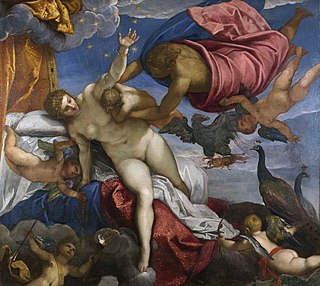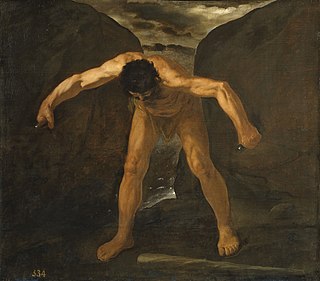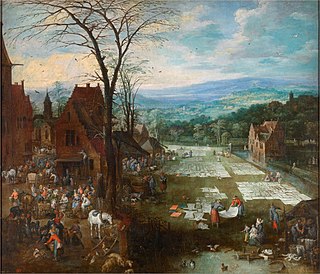
The Prado Museum, officially known as Museo Nacional del Prado, is the main Spanish national art museum, located in central Madrid. It is widely considered to house one of the world's finest collections of European art, dating from the 12th century to the early 20th century, based on the former Spanish Royal Collection, and the single best collection of Spanish art. Founded as a museum of paintings and sculpture in 1819, it also contains important collections of other types of works. The Prado Museum is one of the most visited sites in the world, and is considered one of the greatest art museums in the world. The numerous works by Francisco Goya, the single most extensively represented artist, as well as by Hieronymus Bosch, El Greco, Peter Paul Rubens, Titian, and Diego Velázquez, are some of the highlights of the collection. Velázquez and his keen eye and sensibility were also responsible for bringing much of the museum's fine collection of Italian masters to Spain, now the largest outside Italy.

Francisco de Zurbarán was a Spanish painter. He is known primarily for his religious paintings depicting monks, nuns, and martyrs, and for his still-lifes. Zurbarán gained the nickname "Spanish Caravaggio", owing to the forceful use of chiaroscuro in which he excelled.

Juan Bautista Martínez del Mazo was a Spanish Baroque portrait and landscape painter, the most distinguished of the followers of his father-in-law Velázquez, whose style he imitated more closely than did any other artist. A fine painter himself, Mazo was a master of landscape, as proven by his most celebrated work View of Saragossa.

The Adoration of the Shepherds is a painting of the traditional subject which was painted during the last year of El Greco's life. The painting is a work which the artist made to hang over his own tomb in the convent of Santo Domingo el Antiguo in Toledo. His signature, in Greek, may be seen in the lower left corner.

Saturn Devouring His Son is the name given to a painting by Spanish artist Francisco Goya. According to the traditional interpretation, it depicts the Greek myth of the Titan Cronus, who, fearing that he would be overthrown by one of his children, ate each one upon their birth. The work is one of the 14 Black Paintings that Goya painted directly onto the walls of his house sometime between 1819 and 1823. It was transferred to canvas after Goya's death and has since been held in the Museo del Prado in Madrid.

The Origin of the Milky Way is a painting by the Italian late Renaissance master Jacopo Tintoretto, in the National Gallery, London, formerly in the Orleans Collection. It is an oil painting on canvas, and dates from ca.1575–1580.

Apollo in the Forge of Vulcan, sometimes referred to as Vulcan's Forge, is an oil painting by Diego de Velázquez completed after his first visit to Italy in 1629. Critics agree that the work should be dated to 1630, the same year as his companion painting Joseph's Tunic. It appears that neither of the two paintings were commissioned by the king, although both became part of the royal collections within a short time. The painting became part of the collection of the Museo del Prado, in Madrid, in 1819.

The Three Graces is an oil painting of the Three Graces by Peter Paul Rubens.

The Bacchanal of the Andrians or The Andrians is an oil painting by Titian. It is signed "TICIANUS F.[aciebat]" and is dated to 1523–1526.

Portrait of an Unknown Gentleman is an oil painting by El Greco.

Helena Fourment or Hélène Fourment was the second wife of Baroque painter Peter Paul Rubens. She was the subject of a few portraits by Rubens, and also modeled for other religious and mythological paintings.

Hercules's Dog Discovers Purple Dye or The Discovery of Purple by Hercules's Dog is an oil painting by Flemish artist Peter Paul Rubens painted circa 1636, towards the end of his career. It depicts the mythical discovery of Tyrian purple by Hercules and his dog, and was one of dozens of oil on panel sketches made by Rubens for the decoration of the Torre de la Parada in Spain. A completed painting based on Rubens's sketch was made by Theodoor van Thulden in 1636-8, and is now held by the Prado Museum.

The Adoration of the Magi is a very large oil painting by the Flemish Baroque painter Peter Paul Rubens. He first painted it in 1609 and later gave it a major reworking between 1628 and 1629 during his second trip to Spain. It is now in the Museo del Prado in Madrid.

Hercules separating the mounts Calpe And Abyla is a work by Francisco de Zurbarán, created in 1634.

Caritas is an oil on canvas painting by Flemish painter Gaspar de Crayer. The painting is in the collection of the Museo del Prado in Madrid.

Flemish Market and Washing Place is an oil on canvas painting by Flemish painter Joos de Momper. It was painted in the 1620s, and it might be a collaboration between de Momper and Jan Brueghel the Elder

Landscape with Sea and Mountain is an oil on canvas painting by Flemish painter Joos de Momper. It was painted in the early 1620s, and is currently housed at the Museum of Prado in Madrid.

The Infanta Isabel Clara Eugenia in the Mariemont Park is a large oil on canvas painting by Flemish artists Jan Brueghel the Elder and Joos de Momper. It was painted in the first quarter of the 17th century. The painting is kept in the Museum of Prado in Madrid.

Landscape with Skater is an oil on canvas painting by Flemish artist Joos de Momper. The painting is today considered a collaboration between the latter and Jan Brueghel the Elder. It was painted between 1615 and 1625. The painting is kept in the Museum of Prado in Madrid.

Alpine Landscape is an oil on canvas painting by Flemish painter Tobias Verhaecht. The painting was completed between 1600 and 1615, and is now in the Museum of Prado in Madrid.




















